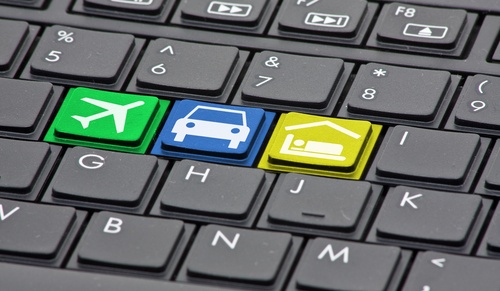Accounting
Making Sense of Travel and Expense Management in 2017
No matter what leads a company to embrace the latest technologies, those who do make the switch to T&E automation are generally pleasantly surprised with the outcome. We know this because we asked, and in the 2017 study the actual benefits companies reali
Mar. 01, 2017

It’s 2017, and the promise of new technology is everywhere. Even traditional business travel and the back office process of managing employee-initiated expenses are experiencing something of a revitalization. And it’s easy to see why, as modern conveniences first designed for a consumer audience are now also driving user preference behind a surge of innovation in the corporate market.
Of course, not every company has embraced the latest mobile technologies or cloud-based automation. A recent survey of more than 600 CFOs and accounting professionals conducted by my firm, Certify, found 46 percent of businesses today are using some form of a paper- and spreadsheet-based manual process for employee expense reporting and reimbursement. We’ve run this study for five years now, and what’s really interesting about this statistic is the number of companies using a manual process for T&E has remained relatively steady over time. With the exception of 2014 where manual usage was at a low of 39 percent, the results each year have shown roughly half of U.S. companies are managing expense reporting manually. This, despite evolutions in the technology that make even the most sophisticated solutions accessible to companies of every size on a cost-effective basis.
Still, with so many using a manual process, it’s no surprise to see that some of the same old expense management challenges persist in the workplace. At 52 percent, study participants report employees losing paper receipts as the number one expense management pain point of 2017. And employee failure to submit reports on time comes in second at 51 percent. While lost receipts and late reports happen for a number of reasons no matter the process, accounting professionals can alleviate much of their frustrations with employees by using an automated T&E system. Features like mobile digital receipt capture makes paper receipts a thing of the past, and workflow automation cuts down on the kinds of inefficiencies and hassles that can cause delays in creating and submitting expense reports.
As great as these technologies are, they won’t always help the process when it comes to online purchases and mobile payments. Fact is, paper receipts from the point of sale are going the way of the dinosaur. Online and mobile purchases with electronic receipts are fast becoming the norm for everything from travel bookings to the printer cable your new employee just ordered on Amazon. While convenient for the user, these transactions also complicate the expense reporting process and may actually lead to an increase in lost receipts. Especially where the common practice is to staple physical receipts extracted from your wallet or handbag to a paper spreadsheet. It’s really a significant change in protocol for the employee.
What can accountants and T&E administrators do about it? Corporate credit card and p-card integration automate the reconciliation process, which in turn takes a little of the pressure off employees, although they’ll still need their receipts. In addition, expense system integrations with business travel vendors available with some solutions also eliminate the need for paper receipts. For example, through integration ride-hailing provider, Uber, has created partnerships with a number of expense vendors (including Certify) to automatically add business expenses to the individual user’s report.
So, why do some businesses go automated while others don’t? Many smaller organizations manage a manual process just fine due to lower reporting volume and reimbursement requirements. Of course, travel and entertainment spending is a significant investment with an expected return. And depending on the industry and other factors, these costs can add up to a significant portion of the total annual budget. As a company grows and T&E expense management grows in importance, automation can be a strategy to scale the process in a way that adds new levels of accountability, spending control and increased reporting visibility.
No matter what leads a company to embrace the latest technologies, those who do make the switch to T&E automation are generally pleasantly surprised with the outcome. We know this because we asked, and in the 2017 study the actual benefits companies realize by switching systems surpassed expectation in every category we measured. For example, while just 15 percent of companies expected to be able to reimburse employees faster using an automated system, 42 percent happily reported this benefit as a result of switching. And for all those struggling with late reports, 28 percent of companies that switched saw an increase in the timely submission of employee expenses.
——–
Bob Neveu is CEO of Certify an online travel and expense management solution for companies of all sizes. Organizations worldwide book travel and complete expense reports quickly, easily, and cost-effectively using Certify cloud and mobile applications.
